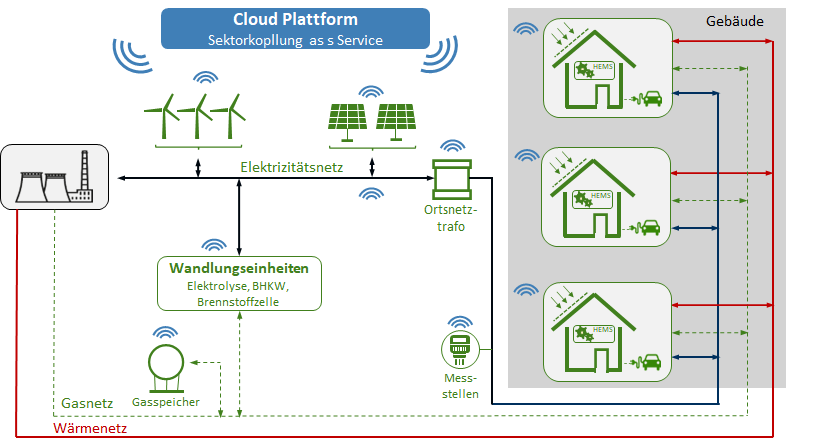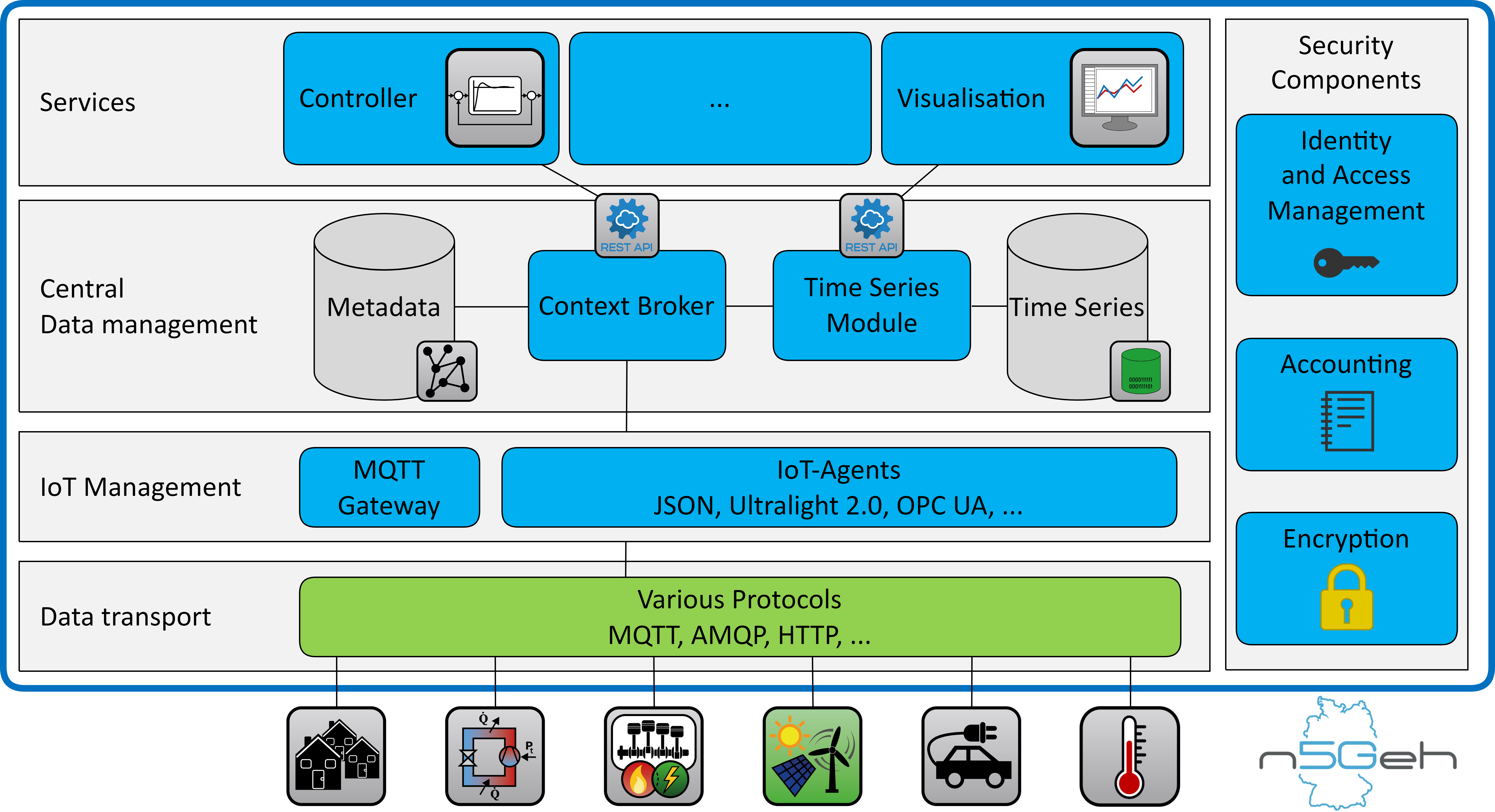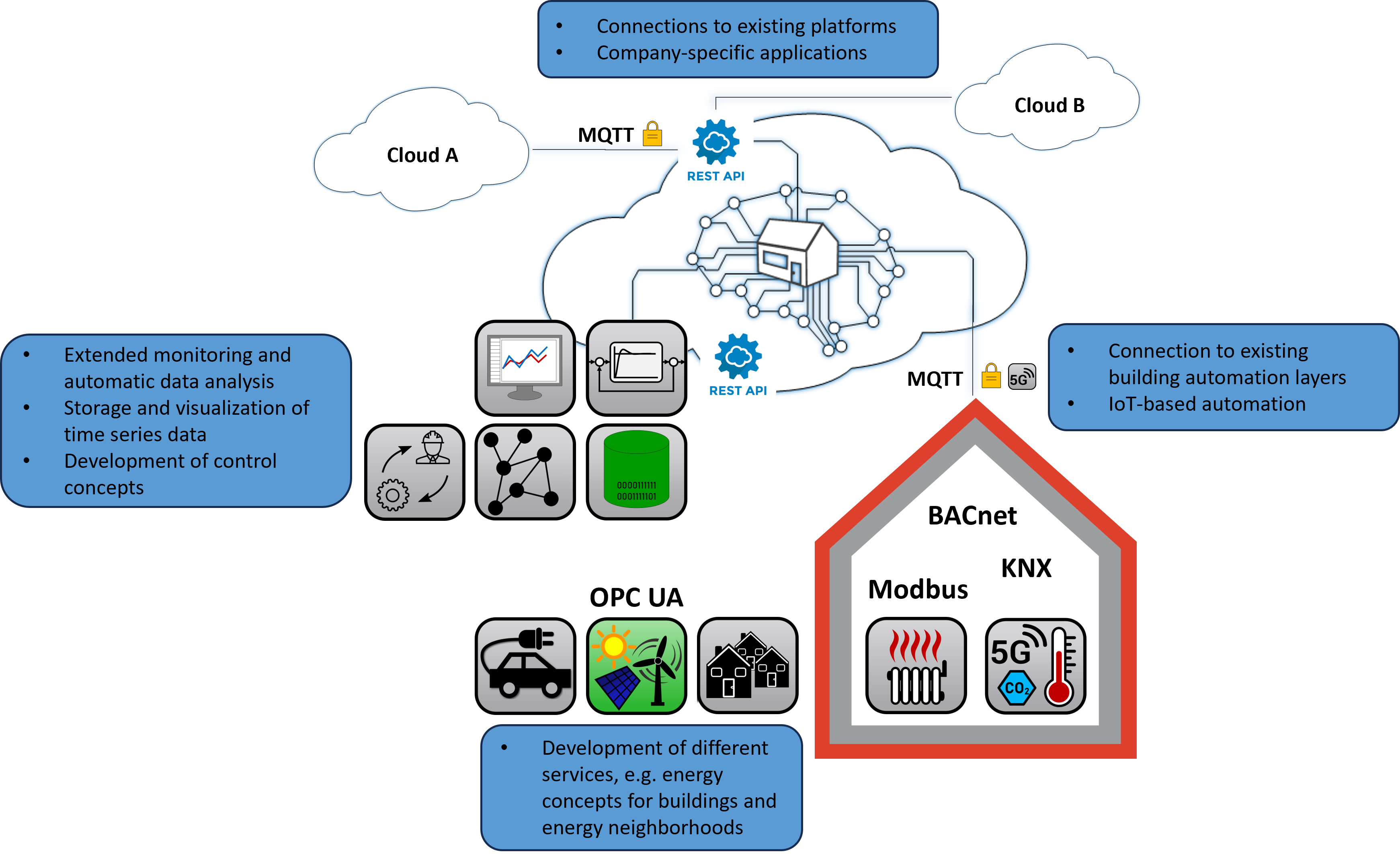The N5GEH project
To implement the energy transition and the associated transition from a centralised to a decentralised energy system, a targeted initiative is needed to introduce modern communication structures in the field of decentralised energy technology. The National 5G Energy Hub therefore aims to create digitisation and application routines to enable users to develop new technologies for the energy transition. In particular, the National 5G Energy Hub addresses the application of modern communication technologies for the integration of sensors and actuators for the provision of energy-related services.
For this purpose, a basic software structure was developed in the first project phase (2018 – 2020), which includes the essential elements of data acquisition, data transmission, data storage and data visualisation. With regard to data acquisition and organisation, a scaling solution was implemented. Further information on this can be found in the summary of the final report.
The N5GEH open source software is structured in such a way that a kind of “modular system” is available for use, so that different application-specific solutions can be integrated.
The N5GEH offers satellite projects the provision of a platform for energy systems that can be adapted and used by research institutions and industrial companies for their services. The platform has a uniform data format and is created in a modular way, following the most modern development principles, which ensures that as many use cases as possible can be covered. Significant features continue to be:
- Interfaces to common field systems and integration of commercially available gateways for further systems
- Uniform user management and authentication
- Prefabricated basic structures for energy services (monitoring / control / sector coupling)
For the implementation of the specific use cases of the satellite projects, they will be supported by the N5GEH by providing a freely available reference implementation. This will exemplify the integration of energy systems into a central platform and the use of basic services.


